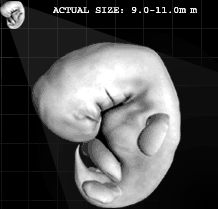Stage 16
 I've just finished writing an article about Poland's Syndrome, a rare disorder. An editor assigned it to me after I happened to mention that my son had the condition. Having already done most of the groundwork with geneticists, surgeons, and physical therapists, I didn't find the article too hard to write.
I've just finished writing an article about Poland's Syndrome, a rare disorder. An editor assigned it to me after I happened to mention that my son had the condition. Having already done most of the groundwork with geneticists, surgeons, and physical therapists, I didn't find the article too hard to write.Poland's Syndrome (sometimes called Poland's Anomaly; also sometimes written "Poland" instead of "Poland's") is named after the doctor, Sir Alfred Poland, who first identified it. It's a birth defect characterized by deformities of the chest and hand on one side of the body, usually the right-hand side. It's more common in males than in females. The classic manifestation is lack of the major pectoral muscle on the right side of the chest, and short phalanges (finger bones) on the right hand.
Poland's Syndrome is the result of a minor ischemic insult--a mini-stroke--occuring at Stage 16 (on or about the 48th day) of fetal development. That's the point at which limbs are developing, nipples are forming, fingers are separating in the unborn child. A momentary lack of blood flow to the right side of the body causes the abnormalities. Nobody knows why.
It can't be a totally random occurence. Why is it more frequently manifested on the right side? why more frequent in males? Accumulating enough statistical data to research the condition is difficult, since it is so rare. Poland's Syndrome occurs in something between 1:10,000 and 1:100,000 births. Most doctors have never even heard of it.
My own pediatrician did not diagnose it. I had to tell him about it, and when I did, he gave me an argument. I got better results at the Shriner's Orthopedic Hospital, where doctors had at least heard of Poland's Syndrome, although they rarely treated a case.
My son went through a period when he was self-conscious about his condition, but he's fine now. It really isn't too noticeable or disabling. After writing the article, I was reminiscing a bit with my daughter about first realizing her little brother's hands were not the same size.
They're not?? she asked me. She'd grown up in the same house with him, watched him write and draw, played patty-cake with him, helped him wash up. Yet never picked up on the abnormality.
Our brains are constantly being assaulted with gazillions of bits of data. We assemble some of it into meaningful patterns, and discard the rest. Once we've "seen" a pattern, we can't not see it. Most everything else we can tune out. It's amazing what we can ignore if it's not pointed out to us.


0 Comments:
Post a Comment
<< Home